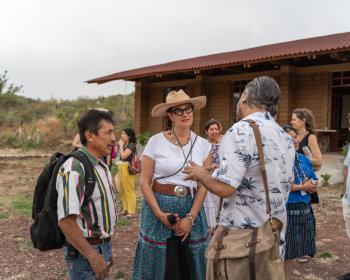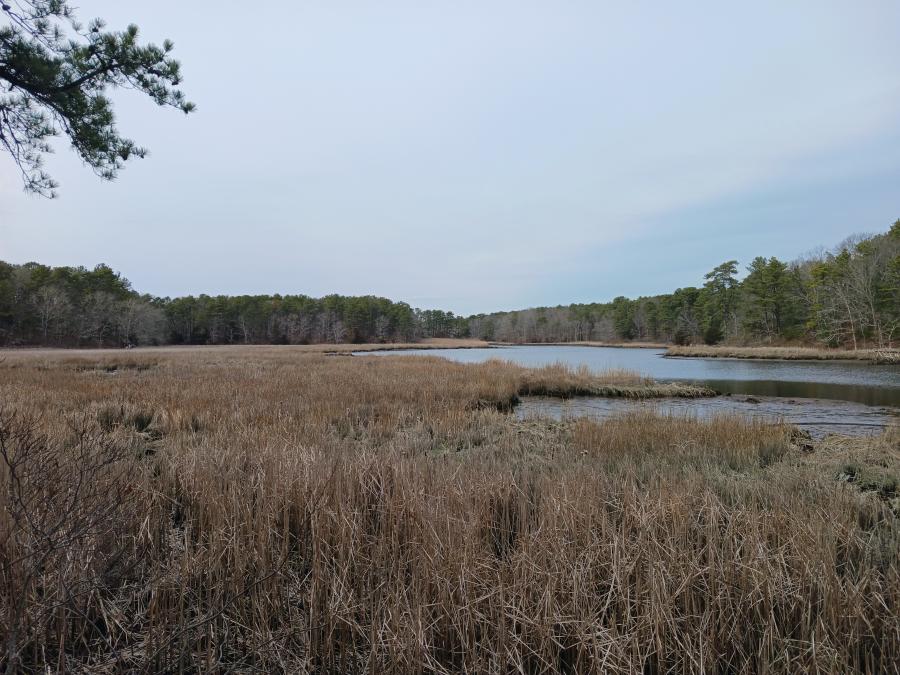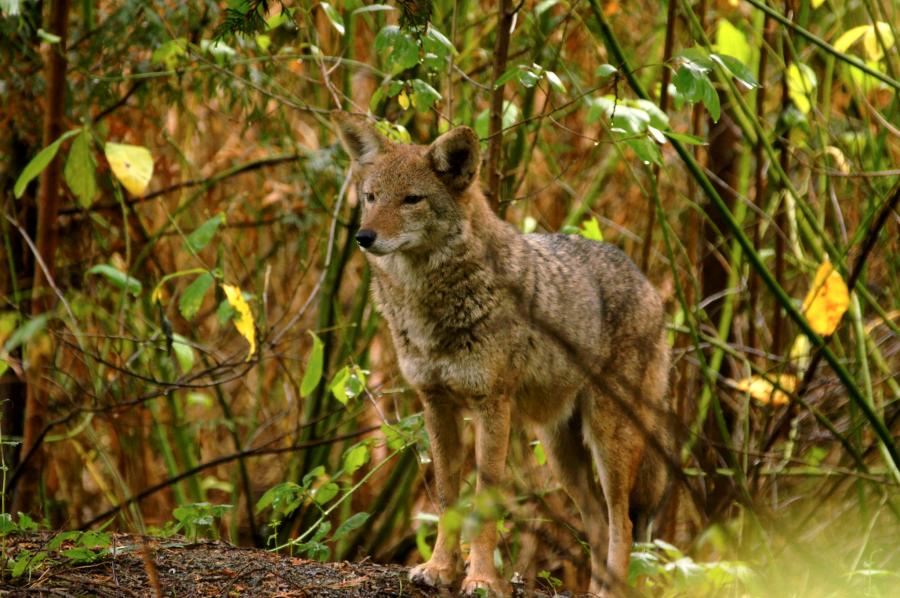"I have lots of extended family -- all of them live on the reservation. Most of them are unemployed right now. My mom's really proud of me. I'm the first generation college student who went to a four-year university. She's happy with the work I'm doing because it's giving back. She knew I wanted to come back to work for my people at some level, and that I did not quite know how to do that. Back home, non-Native people do make a lot of our tribal decisions. It was hard for me to come back home. I may be educated, but I didn't have experience. I got screened out because of it. I am grateful to IEN for giving me this chance, because I did have limited experience."
Kindness is now operating as a circuit rider in North America and Mexico, with a firm belief that strengthening traditional beliefs protects the Earth from further destruction. Organizing a national conference on oil and globalization or wearing a hard hat in the dust bowl of a open mining pit, Kindness is focusing her energies on what she considers to be an imminent threat to Native people in the region.
"The first community I visited was very interesting. The lawyer for Project Underground, a non-Native organization, had called the Quechan Tribe in Southern California. She asked to meet with them, and they never called her back. They just never responded. When I called down there, I explained who I am -- our project -- and asked if we could come down and talk to them. [The woman I spoke with] said, `yes, come into my home.' She was more than willing to welcome us into her home. But when the non-Native lawyer called her she was hesitant, she didn't respond. There is a lot to say for Native people working with each other, opening doors. There is a lot of trust there. It wouldn't be that way if I weren't Native."
As Native America builds its own cadre of experts in the field of mining, Kindness is among a new generation of Native activists. With a degree in sociology, Kindness has particular interest in the social impacts of development: "There is a constant worry in these communities. They may not know all the impacts of the mining on their health. We see a real increase in alcohol and drug use. When I go to these communities, they have all been impacted. Some people are pro-mining, and a division is created in the community."
In the past, tribes have sought financial benefits from the mines on or near their reservations. The Laguna Acoma Pueblo of New Mexico, for example, benefited financially when they decided to have a uranium mine. This was in the 1950s, and they voted yes on the proposal because they needed jobs. That's what the mine promised them. Eventually, when the mine shut down, they were back where they started.
"That is the boom-bust economy of mining," says Kindness. "You have all kinds of mines. People in these communities have all different levels of say in whether a mine happens. The Newe Sogobia, the Western Shoshone in Nevada, did not have a say at all. Their land was taken: they never ceded it. Their treaty of Ruby Valley only allowed for people to cross over their traditional land, which is practically all of Nevada Now, there are over tWO hundred gold mines on their land, owned by non-Indian corporations."
Kindness also cites the case of the Dineh (Navajo), whose exposure to radioactivity as a result of uranium mining has been especially well-documented (see article by Brugge, Benally & Yazzie, this issue): "The video The Return of Navajo Boy show the impact that uranium mining has had on their people.The director of the movie approached me and asked if I'd be willing to use it in the education portion of my work. We do public education to get the issues out there so people know what happens in these communities -- so that it never happens to them.
"The eventual goal is to network the communities together. For some, mining is forced, and for others, it is proposed development. A lot of what I did this past year was getting out there: letting tribes know that the Indigenous Mining Campaign has begun.
"As for the drug and alcohol use, I believe it is due to the nature of the work: digging up mother earth is what it is, and there is some kind of mentality that develops from working in a destructive way. This year we are going to talk with folks to assess impacts; whether on a closed abandoned mine, a current operation, or a reclamation."
Though Kindness influences this dialogue, the focus of her work is listening. Some people need to network with other people who are impacted by the same kind of mining, some need water testing and legal help. Mostly they need someone to sit there and listen -- basically to know they're not alone in their struggle.
"For the conference, Faith Gimmel spoke as a member of the Gwinch'in' Tribe's Steering Committee for the Preservation of the Arctic National Wildlife Refuge. They are trying to stop the oil development in the Arctic National Refuge. Colleen Poller, from Mole Lake Wisconsin, spoke on the impact if the Cranden Mine goes through [see article by Gedicks and Grossman, this issue]. She addressed the contamination of the lakes where they fish. They harvest wild rice from their lake. Mining uses a lot of water, lowering the water table, which would devastate the rice beds. The mining would contaminate the pristine wolf watershed, which runs the length of Wisconsin."
Kindness is asking hard questions. "Before the mining starts, corporations set aside money for clean-up. Zortman Landusky, for example, had a ten milliondollar bond set aside for clean-up; then, years later, the actual cost of reclamation was 100 million dollars. Where are they going to get it? These Companies file bankruptcy, so you can't go after them. They change names, develop new corporations. It happens a lot in this industry. So who's responsible for clean-up? The tribes of Fort Belknap are suing now, but it can take years for resolution. Ultimately, tax-payers pay."
As battles drag through court, the last remnants of wilderness and of the indigenous populations living there are disappearing at exponential rates. Kindness is battling back by amplifying the Native voice.
"I would like us to be meeting the needs of our communities. It is not about what I want, but what our communities want the Indigenous Mining Campaign to be in the future. We are serving the needs of the people. I am helping them define what they want for a project. It's not what we want, but what they want -- what they need -- in a way that's useful to them. It is very rewarding work. I try to make a difference. Traveling's hard, but I am dedicated. I would like to continue for a long time; just helping out -- assisting in some way -- for our people. So far, I've had really good responses. It's good to go talk to folks -- to help them with a name, a contact, a resource. We exist for Native peoples. And Native communities going ahead with their sovereign right to mine? We don't look down on them. We respect them. We just want the opportunity to inform them of the impacts of mining."
Article copyright Cultural Survival, Inc.



